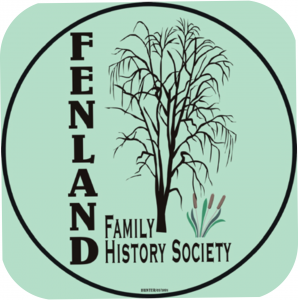Following our presentation from Chris Donald last October, we persuaded him to give us a tour of one of our local treasures, the Friends Meeting House.
The Quakers (or Society of Friends) had their first Meeting House on the site in 1711. There are records of Quakers in Wisbech in the 1660s, but, until the Declaration of Indulgence, 1687, they were often persecuted and imprisoned for their faith.
The Declaration of Indulgence was a pair of proclamations made by James II which suspended the penal laws against Catholics and Dissenters and permitted people to worship other than in the established Church of England, either in private houses or in chapels.
The initial Wisbech Meeting House was formed from a pair of thatched cottages, a drawing of which by Algenon Peckover from 1834 was on display.
You will find many Quakers in the history of tradesmen and merchants. Their religion was a barrier to getting a university degree and thus the professions that required a degree so, Quakers often went off on their own to build their own companies. The Peckovers in Wisbech were such merchants who also went on to form what became Barclay’s Bank.
It was Algenon Peckover who had the new Meeting House built in 1854, He also designed the building. As is typical of Meeting Houses, the design is simple without any fancy decoration or religious symbols, as the congregation should not be distracted from their thoughts. The people are the church, not the building.
One of the main beliefs of the Quakers is that all are equal and all attending a meeting may address the rest. However, there was still a sign of past conventions, with a raised area for the Elders.
The upper part of the building was converted into flats in the 1970s. Thes are mainly tenanted by elderly single people and bring in income to assist with maintenance of the building.
What used to be a second, overflow, chamber is now an area for sitting and refreshments overlooking the garden. In this room are many artefacts showing the history of the building and the Quakers in Wisbech. As well as pictures, there were details of the burial ground at the rear of the building. The garden used to be the house burial ground with 32 burial plots. 18 of these are for the Peckover family and all of the Peckovers who died in Wisbech are buried here. The simple gravestones have now been removed to the side walls.
There is also a very special grave in that it is for Jane Stewart, one of the natural daughters of James II.
JS AGE 88 1742 is set out in box hedging on her grave and it is testament to her memory that this has been maintained since she died. It was this grave that set Chris Donald to write his book: Wisbech’s Secret Princess.
